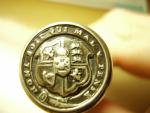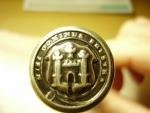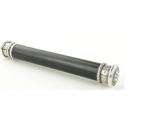-
Posts
104 -
Joined
-
Last visited
Content Type
Profiles
Forums
Blogs
Gallery
Events
Store
Everything posted by Nightbreak
-
I've been wondering recently what sorts of resources are out there to help us identify some of the markings on our truncheons and other staves. Often the auction houses or sellers do the adequate research or the town names are painted on the wood, but in many cases, it's unidentified and we have to rely on some expert work or another. http://www.ima-usa.com/original-british-victorian-painted-police-truncheon.html Here's an example of the dealer not mentioning that the truncheon is a Cambridge University piece. I had to flip through a heraldry book online to pick out the proper nomenclature to even begin looking up what it meant. http://www.gutenberg.org/ebooks/23186?msg=welcome_stranger This doesn't apply to town crests, either, many of which are sometimes hard to describe properly to bring up a good result. Edingburgh, Manchester? Fairly easy. Coats of arms of smaller counties? Not always simple. So, what other resources are out there? What do you use?
-

Mervyn Mitton
Nightbreak replied to Craig's topic in Great Britain: Mervyn Mitton's British & Colonial Police Forces
Mervyn was the first authoritative source I came across, after Christopher McCreery mentioned tipstaves in his Canadian Symbols of Authority. I picked up pieces here and there, always posting them here and asking him questions, which led to Mervyn finally saying (more than once) "You should pick up a copy of my book." I did, finding an autographed copy for sale, and it's a joy to flip through. Also, I was fortunate enough to pick up a picture of the lone Canadian truncheon in existence for him late last year. He'd spoken about it in his book, but never got to see it until now. I took Policeman's Lot to my OMRS meeting this week and it was only then that someone informed me that Mervyn had passed away. -
Well, that was a lot of money and packaging for a tiny item. 5 1/2 inches long, 3/4 inch in diameter, with the Edinburgh crest on one end (with Instituted 1698 around the rim), the Royal Crest on the other (with E.H.C. No. 114 around the rim) Apparently No. 29 was sold by Spink in December 1997 and No. 103 sold by Wooley and Wallis in 2011. No. 124 was withdrawn by Bonham's in 2010. Mervyn, Spink references your book, page 87, figure 3, the third ebony & silver tipstaff.
-
The Saleroom currently has an ebony and silver Glasgow tipstaff, named, estimated between 800 & 1200 pounds http://www.the-saleroom.com/en-gb/auction-catalogues/woolley-and-wallis/catalogue-id-2916912/lot-25122296?searchitem=true I'm about to receive an Edinburgh ebony and Silver-capped High Constable's staff, which looks to be either George IV or William IV.
-
Mervyn: It seems to be a house, of all things, with a long path in the middle (three or four stone steps at the end), one window on the left, two on the right, and a chimney at the top. The problem is that it goes around more than half of the shaft., so a straight-on image doesn't give us the full thing. I have not heard back from the curator at Holyroodhouse yet, unfortunately. The 'passed-on' request may have gotten buried in her inbox.
-
I had been reading Meryvn's book "The Policeman's Lot" the other week and came to the section on Canada. He spoke of the lone truncheon he had been able to find, on display at the Bytown Museum in Ottawa. They described it for him, but there was no picture. Well, I happen to live in Ottawa and so made inquiries with the collections manager this week. The truncheon is on display at the Canadian Museum of History until 2015, but they kindly sent over a photograph.
-
This has already been purchased. The description did say long stave, but my own measurements put it at 25 inches. I just double-checked the Lockdale's archive from August. So the mistake was at their end. Have reached out to an old contact in the Royal Collection Armory to see if he has any like it in the vaults.
-
Mervyn: Yes, sorry, I was just going by the auction description. It probably should have read Police Staff. I'm going to try and do something about a better picture, but the curve of the staff tends to attract the light source into a line at just the wrong spots on 'close up', while 'super closeup' is just a bit too close, it seems. I might have to get it in a more open, naturally lit area. It is a wide house, certainly, and has a chimney, what looks to be a path, and several windows.
-
I was successful at Lockdale's the other month and picked up this George III long staff at the auction for a relatively good price. The others being sold were Perth/Leith and Edinburgh High Constable Staves, but this one was unidentified, purportedly from 1805-1810. 25 inches in length, it comes with the GIIIR cypher at the top and a printing of a house and 41. at the bottom. It's slightly difficult to get a good shot without getting that band of light over the picture, but I took a few to show the angles.
-
Then I was very lucky, as I acquired this specimen for only 60 pounds. When looking around the internet, I saw a much better condition Victorian one (exactly the same, except for a ribbed handle) with the Manchester City coat of arms on it. It had sold last year at auction for 80 pounds. I was just unsure as to where it would have been used, with nothing but the crown and cipher. Would this be just a piece used for identification of an officer, or a desk piece?
-
OAK leaves! And here I was thinking it was a snowflake pattern. That's what I get for being from Canada, I guess. Maybe they are related to a town, as I can't think of another way to identify much about it. Some have said that the baluster shape of the truncheon places it in Manchester or thereabouts.






